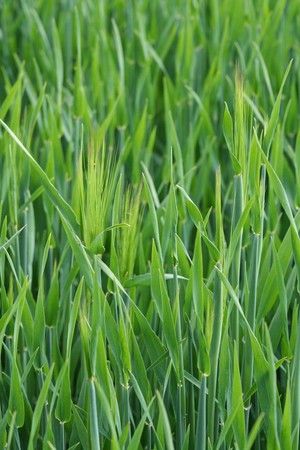The last couple of blogs have been about black-grass alongside field size and biodiversity. There’s a rather thin thread of a connection between the two subjects. Are the current issues over black-grass control going to result in more spring-sown crops?
A recent BASF survey of farmers’ attitudes to cultural control of the weed suggests that we are indeed going to see more spring-sown crops. The most likely scenario is that this will mean more spring barley as it has the most agchem control options for black-grass that’s emerged in the spring in response to the cultivations involved in establishing the crop.
Those farmers who have recently grown spring barley as a cultural control option for black-grass have been pleasantly surprised by the results they have achieved. Whether this is because of better machinery achieving a more reliable crop establishment than in the past or because we’ve had a run of relatively dry springs remains to be seen.
Now the connection with biodiversity! It was the effective control of black-grass and other grass weeds that led to the huge adoption of winter-sown crops in the 1970s and early 1980s, at the expense of spring-sown crops. And this increase is considered to be one of the main reasons for the reduction in biodiversity, particularly farmland birds, over the last few years.
So the likely trend to an increase in spring barley at the expense of winter wheat may be good for farmland birds? Well, it could be but spring barley now is not what spring barley was in the 1970s. It is now sown earlier, typically in February to very early March rather than mid to late March in the 1970s. It also receives more nitrogen and weed control is generally more effective; it’s the uncontrolled spring-emerging broad-leaved weeds that can benefit biodiversity.
Spring barley is deemed to be more skylark-friendly than winter wheat because the spring canopy is not so high or dense, particularly beneficial for the second and third clutches of eggs. However, early-sown spring barley that’s received a fair dollop of nitrogen may not be ideal.
Going back to the BASF survey, it seems that farmers are seriously considering all the more effective cultural options for black-grass control. Spring cropping is perhaps the most effective option with experience suggesting that two consecutive spring-sown crops is extremely successful. Ploughing is generally less effective than sowing spring crops but is being seriously considered by a significant proportion of farmers. Less effective is delayed drilling, but again some farmers are seriously considering this option. I assume that the extent of the problem is determining which option individual farmers may take.
Like many, I have serious concerns over the delayed drilling option. It may be a good option for an acreage equivalent to a couple of days drilling but perhaps not for the entire wheat area. With only two days drilling to do it is possible to hold back where conditions aren’t wet until the five-day weather forecast suggests that the seed is better in the ground!
A strategic use of delayed drilling is particularly useful in a very dry autumn. In such conditions there’s not the urgency to drill earlier, partly because there may be poor crop emergence, plus the pre-emergence black-grass herbicides will not work effectively in such conditions. Assuming that the worst black-grass fields are left to last, this approach means that the herbicides may likely be applied to moist seedbeds and certainly closer to when the soil surface becomes moist. I realise that this is all a bit easy when sitting in an office but it is worth thinking it through.

